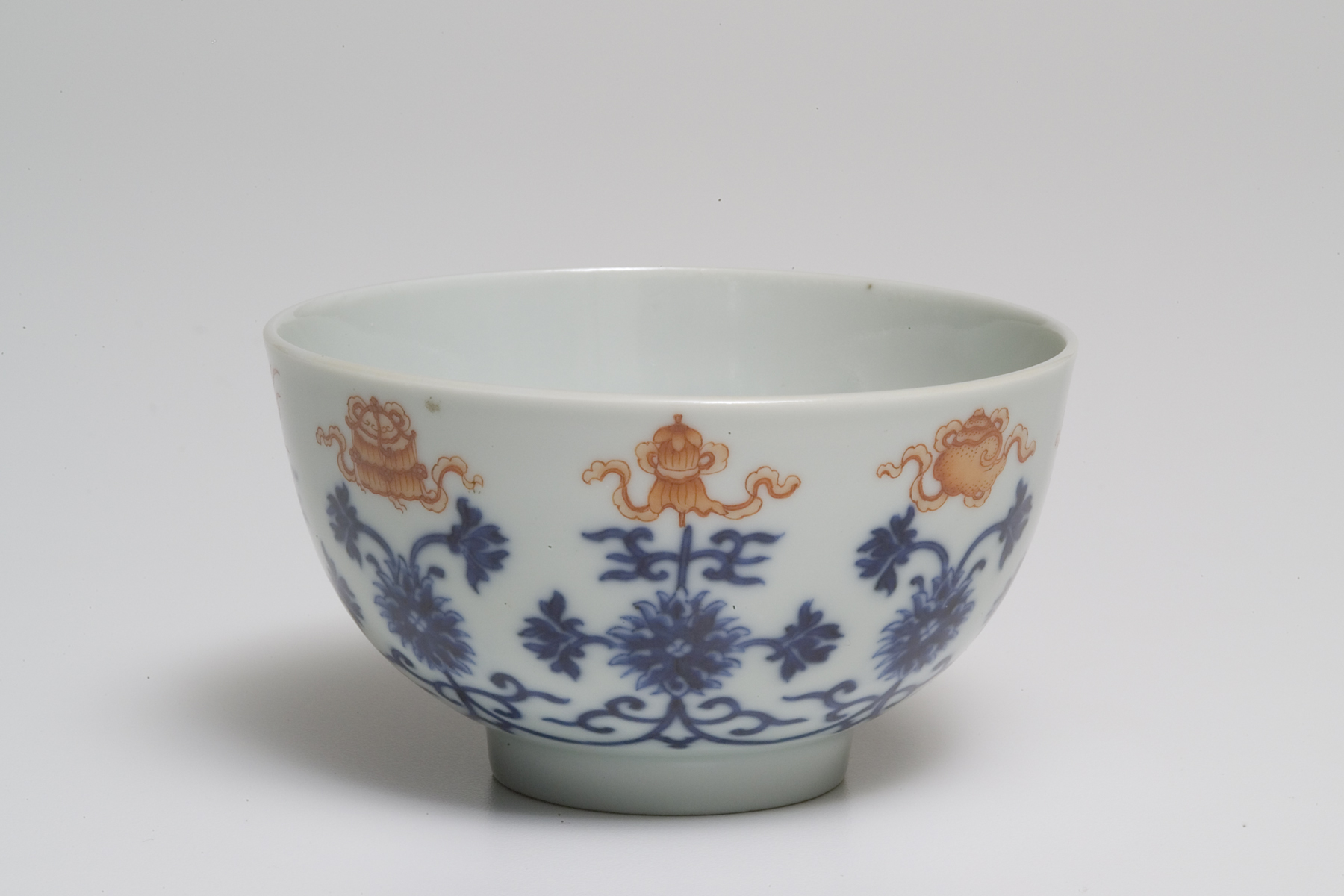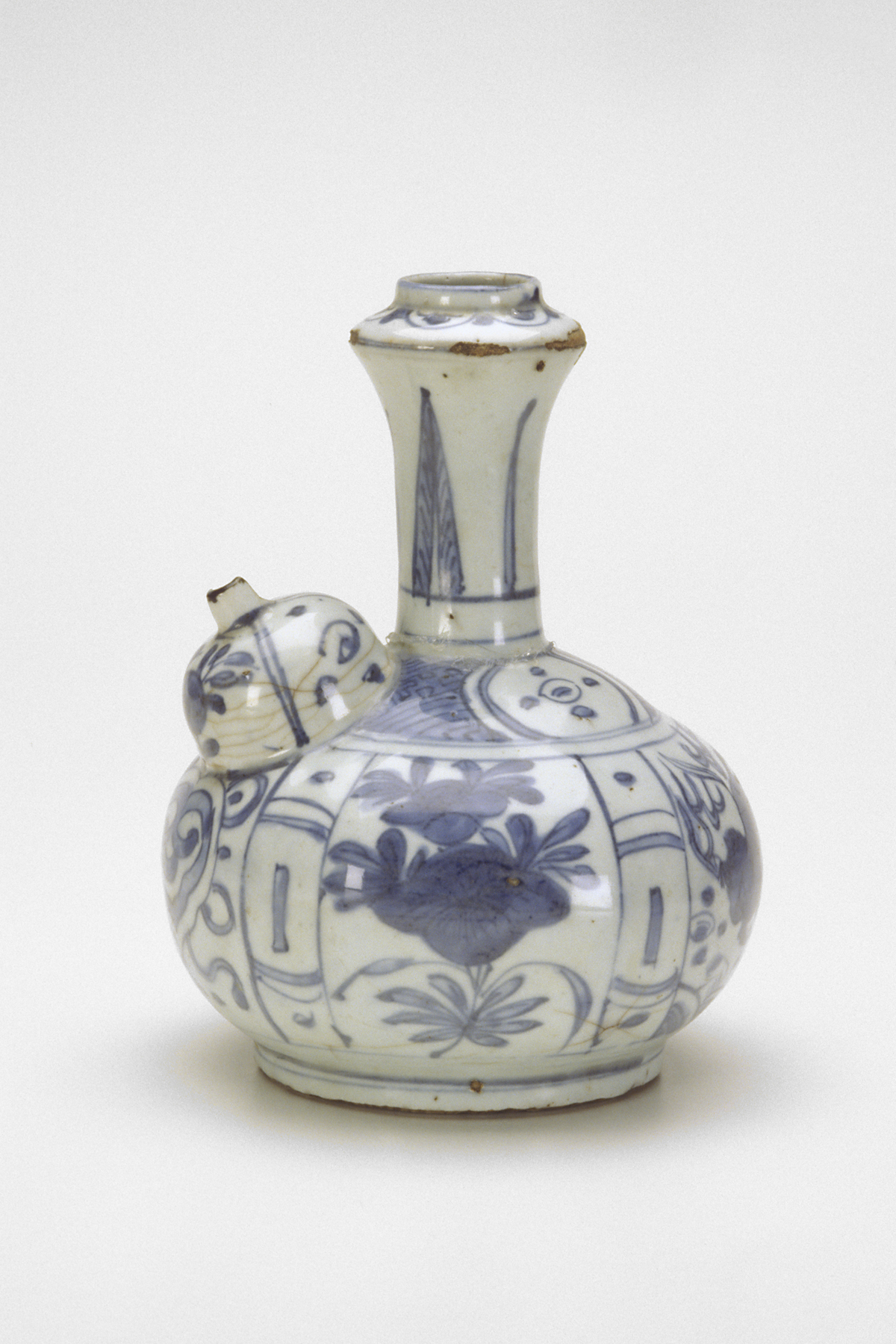Reviving the Past: Antiquity & Antiquarianism in East Asian Art | Circuits of Exchange: The Global Taste for Blue-and-White Ceramics
Exhibition Overview

Mass production of blue-and-white porcelain began sometime in the fourteenth century in Jingdezhen, China, and grew steadily in popularity over the next few centuries. The “blue” refers to the cobalt-derived under-glazing used to decorate the pristine “white” porcelain body. Eventually, global demand for blue-and-white stimulated an immense network of international trade that linked Europe, the Americas, Africa, and Southeast Asia together in a complex “circuit of exchange.” The objects in this case, drawn entirely from the Spencer’s permanent collection, explore the wide variety of decorative styles and vessel shapes created by ceramic artists across the greater Eurasian landmass.















